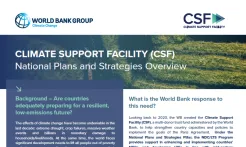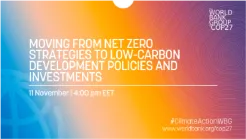The landmark Paris Agreement established the long-term goal of limiting the increase in average global temperature to 1.5-2 degree Celsius above pre-industrial levels. This safe threshold would reduce the impact and risks of climate change significantly. Each signatory to the Paris Agreement is required to establish country actions and commitments, known as nationally determined contributions (NDCs), to reduce greenhouse gas emissions and adapt to the impacts of climate change.
Countries are obligated to submit their NDCs every five years to the United Nations Framework Convention on Climate Change (UNFCCC) secretariat. With each round of updates (e.g. 2020, 2025, 2030), subsequent NDCs are meant to be progressively more ambitious.
As part of its support to countries, the CSF helps with the enhancement and implementation of their NDCs. This includes strengthening institutional capacities, policies, coordination, planning, financing and investments.




